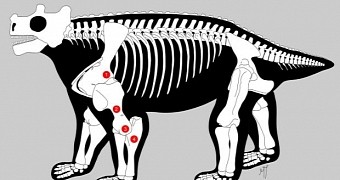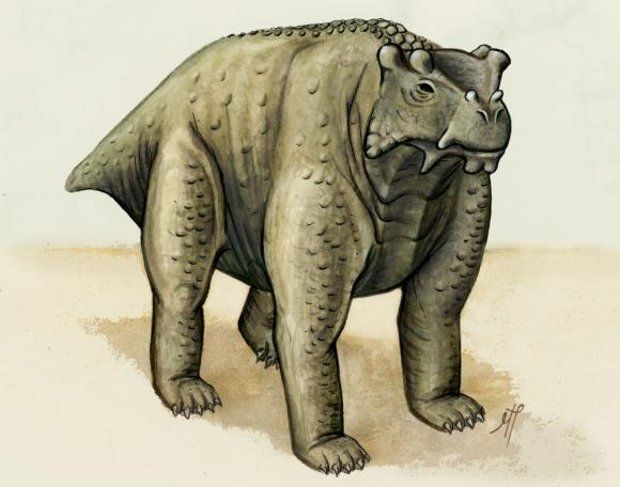A report published earlier this week in the Journal of Vertebrate Paleontology describes a pre-reptile species dubbed Bunostegos akokanensis. The creature lived about 260 million years ago.
It's natural habitat was an arid region on Pangea, a supercontinent that came into being around 300 million years ago and began to break apart about 175 million years back.
As for its size, fossilized remains unearthed over the years and examined by paleontologists show that Bunostegos akokanensis could grow to be the size of a cow or maybe a hippo.
To get a better idea of what this ancient creature looked like, check out the image below. Easy to notice, the pre-reptile was quite fierce and well equipped to defend itself against predators.
“Imagine a cow-sized, plant-eating reptile with a knobby skull and bony armor down its back,” explained researcher Linda Tsuji of the Royal Ontario Museum in an interview.
It's not its looks that researchers are fascinated with
It might be that Bunostegos akokanensis was quite a sight, what with its oversized body and its bony armor, but it's not its looks that paleontologists are quite fascinated with.
Rather, what sparked their interest in this long lost species is the fact that, according to fossil evidence at hand, Bunostegos akokanensis was the first to stand upright on all fours.
Well, either this or at least it's the oldest creature known to walk upright on all its fours limbs thus far documented by science, specialists explain in their report in the Journal of Vertebrate Paleontology.
True, there were other creatures in those days that would use a complete set of four limbs to get around. However, their anatomy was such that they could not completely extend all their limbs.
Rather, like modern lizards and crocodiles, they moved in what researchers call a sprawling stance. One of a kind, Bunostegos akokanensis could completely extent its limbs under its body and walk in an upright position.
“The elements and features within the forelimb bones won’t allow a sprawling posture. That is unique,” sai specialist Morgan Turner with Brown University.

 14 DAY TRIAL //
14 DAY TRIAL // 

